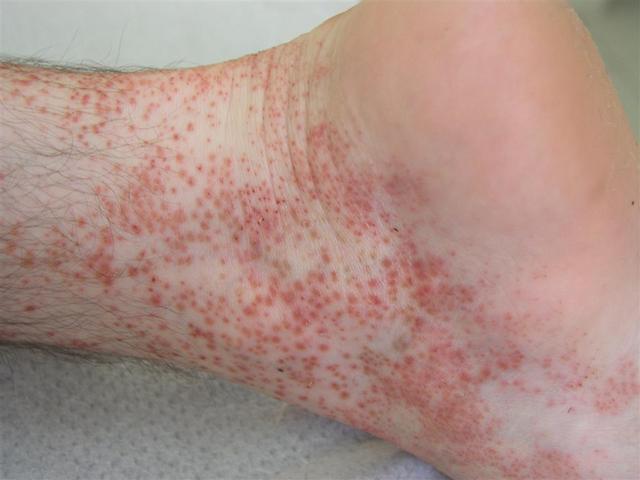Lichen Nitidus Symptoms, Causes, Diagnosis and Treatment

What Is Lichen Nitidus?
The skin cells go through some strange inflammatory activity and as a result tiny, scaly and sometimes itchy bumps are developed on the skin. These bumps are either red or skin colored, depending on the severity of the condition. Fortunately, lichen nitidus is not a discomforting or painful condition and rarely leads to skin cancer. Moreover, it is not contagious so the victims can continue with their normal social life. Usually, children and the young ones suffer from lichen nitidus and both the genders are equally likely to suffer from it.
What Are The Symptoms Of Lichen Nitidus?
Since some other infections or allergies may lead to the development of bumps on skin, some specific symptoms must be observed before consulting a doctor:
- Bumps should be round and flat from top.
- The color of these bumps is usually the same as skin but at times, they are pink or light red. Victims with dark skin color may have bumps whose color is lighter than the skin.
- Although lichen nitidus may appear on any part of the body but chest, arms, abdomens and genital areas are the most common parts. The bumps rarely show up on palms, fingernails and feet.
- The bumps are either pinpoint or pinhead in size.
- Finally, bumps occurring from lichen nitidus may itch severely at times. However, this is not usually the case.
If any combination of these symptoms evolves, victims are suggested to consult a doctor before complications arise. Also, fever and puss are other symptoms that require prompt medical attention.
How Is Lichen Nitidus Caused?
When T lymphocytes, white blood cells responsible for inflammation, are activated in an area, bumps arise. T lymphocytes are usually activated in areas of wounds and injuries but experts and researchers are unable to identify why they get active in lichen nitidus. At times, lichen nitidus is a result of family reasons.
What Are The Risk Factors Of Lichen Nitidus?
Apart from the fact that lichen nitidus is common in young ones; the condition is sometimes associated with other diseases too including:
- Tuberculosis.
- Juvenile rheumatoid arthritis.
- Lichen planus.
- Crohn’s disease.
- Atopic dermatitis.
Fortunately, lichen nitidus is a lenient condition with no possibility of complications.
How Is Lichen Nitidus Diagnosed?
Doctors and medical experts take as much information from the victim as possible and diagnose lichen nitidus through observations. For a very precise picture, doctors often take skin biopsy of the victims. Through this biopsy, doctors recognize a few conditions and confirm lichen nitidus.
How Is Lichen Nitidus Treated?
Since lichen nitidus is not a very severe condition, the bumps usually fade away without any treatment. Fortunately, fading of bumps does not leave any spots or scars on the affected areas. However, one of the following could be used to treat lichen nitidus:
- Retinoid; this treatment is not suitable for pregnant women or women about to become pregnant since it affects the child.
- Corticosteroids.
Topical medications, phototherapy and antihistamines are other methods used for treatment of lichen nitidus.
Related Articles :
Mastitis Symptoms, Causes, Diagnosis and Treatment
Syphilis Symptoms, Causes, Diagnosis and Treatment
Rosacea Symptoms, Causes, Diagnosis and Treatment
Perioral Dermatitis Symptoms, Causes, Diagnosis and Treatment
Dermatitis Herpetiformis Symptoms, Causes, Diagnosis and Treatment
Chancroid Symptoms, Causes, Diagnosis and Treatment
Bullous Pemphigoid Symptoms, Causes, Diagnosis and Treatment
Mammary Duct Ectasia Symptoms, Causes, Diagnosis and Treatment
Lupus Symptoms, Causes, Diagnosis and Treatment
Lichen Sclerosus Symptoms, Causes, Diagnosis and Treatment
Leprosy Symptoms, Causes, Diagnosis and Treatment
Latex Allergy Symptoms, Causes, Diagnosis and Treatment
Jock Itch Symptoms, Causes, Diagnosis and Treatment
Ringworm Symptoms, Causes, Diagnosis and Treatment
Roseola Symptoms, Causes, Diagnosis and Treatment
By : Natural Health News




